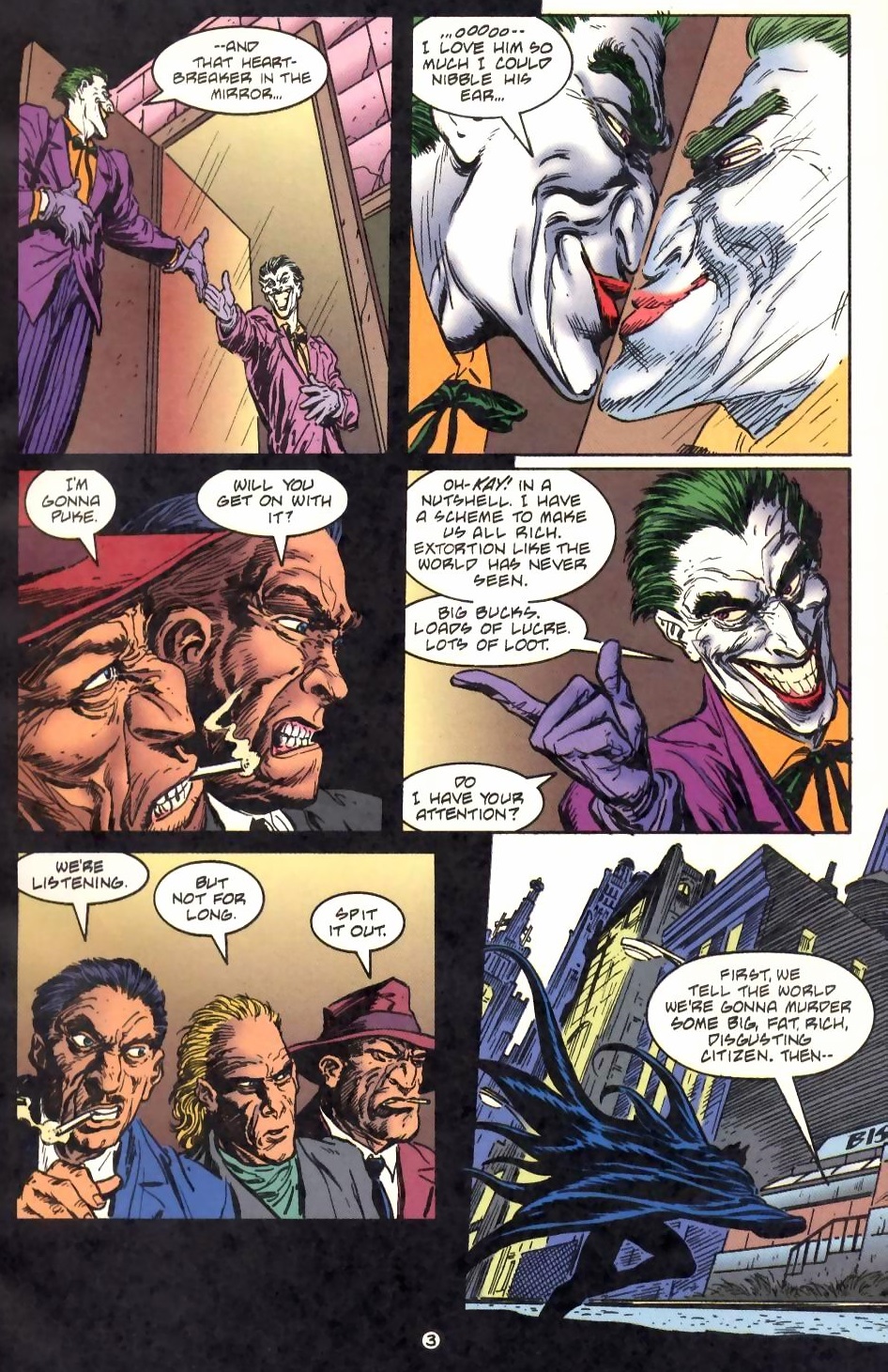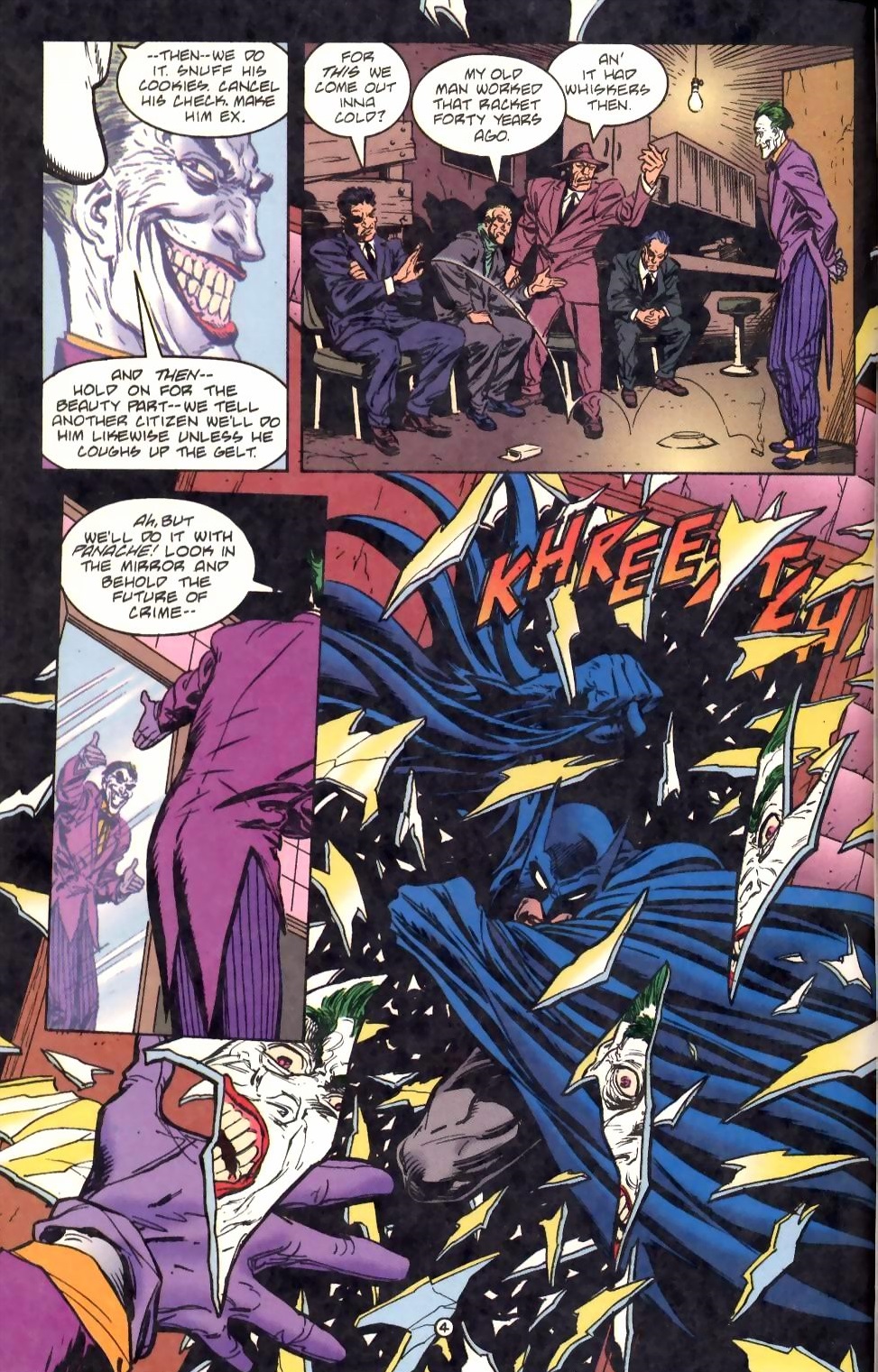If you read the last posts, you know what’s going on. Each day this week I’m focusing on a specific aspect of Batman comics that really appeals to me.
As any fan of this blog can tell, I love finding patterns in this franchise’s vast and diverse publication history. Some patterns are little more than coincidences, others channel specific cultural, political, and/or editorial moments, and many of them are conscious intertextual dialogues between creators responding to each other’s works.
With that in mind, today I want to talk about a few instances when Batman broke through a mirror in order to kick the Joker’s ass…
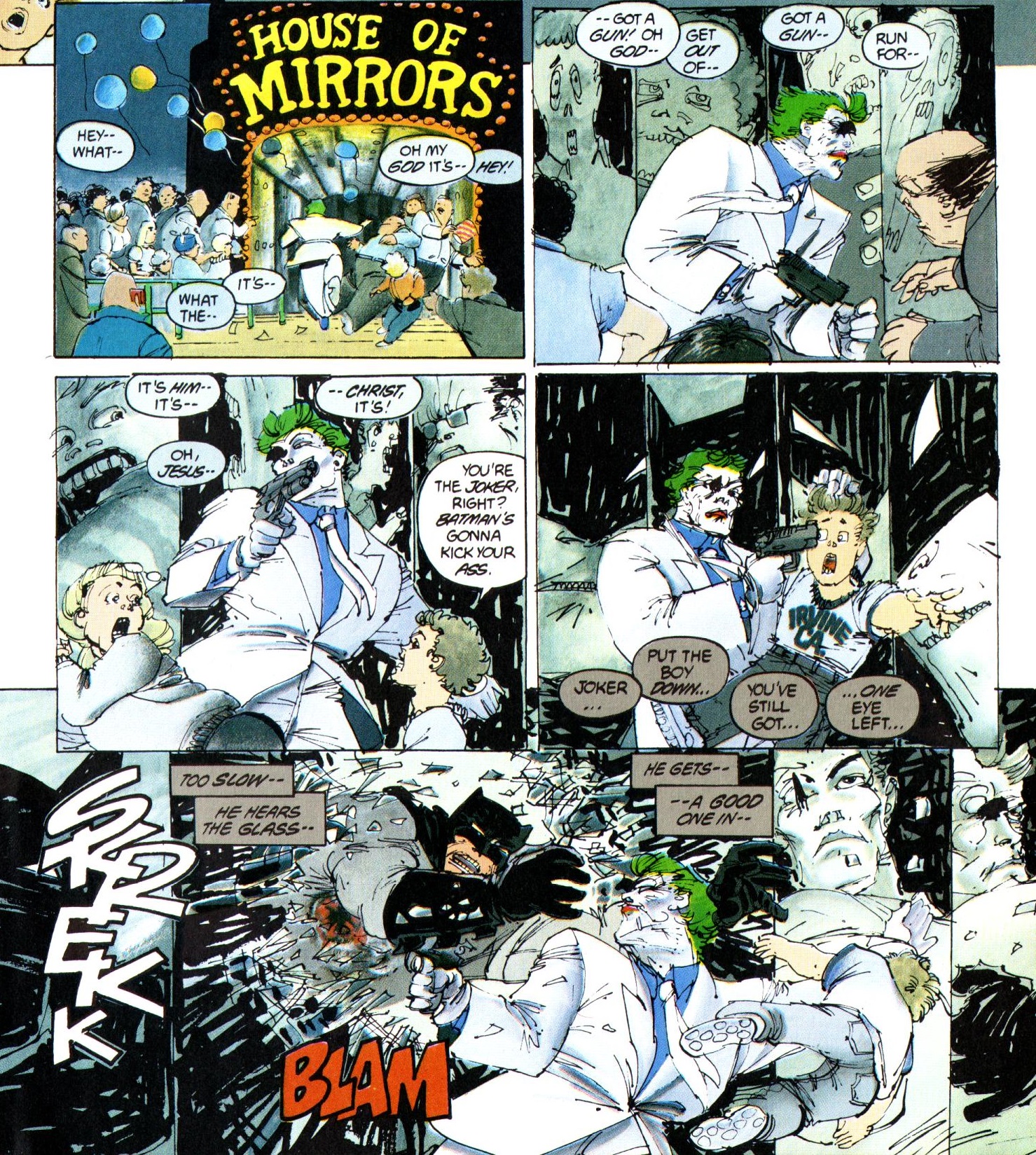 The Dark Knight Returns #3
The Dark Knight Returns #3
The sequence above is from what is arguably Batman’s most famous story, 1986’s The Dark Knight Returns, written and drawn by Frank Miller.
Let’s leave aside the Lady from Shanghai homage, which is too easy a label for any climax set at a house of mirrors. The truth is that there is something inherently eerie and allegorical about funhouse mirrors (recently exploited in Jordan Peele’s Us), so no need to see in it a reference to Orson Welles (even though Miller does generally go to the old film noir well).
There’s still a lot to unpack here, starting with the fact that the Joker threatens to shoot a child, which can be read as one of the book’s many symbols of loss of innocence (or, again, as another cinematic nod, namely to the hospital scene in the blaxploitation extravaganza Truck Turner). Above all, though, I dig the realistic touch of Batman’s narration basically acknowledging that, while visually cool and theatrical, the mirror-shattering move is not very practical. The art nails the point: it looks like an awkward strategy, and the Dark Knight pays the price with a shot in the gut.
Two years later, another highly influential Batman story came up with a similar scene:
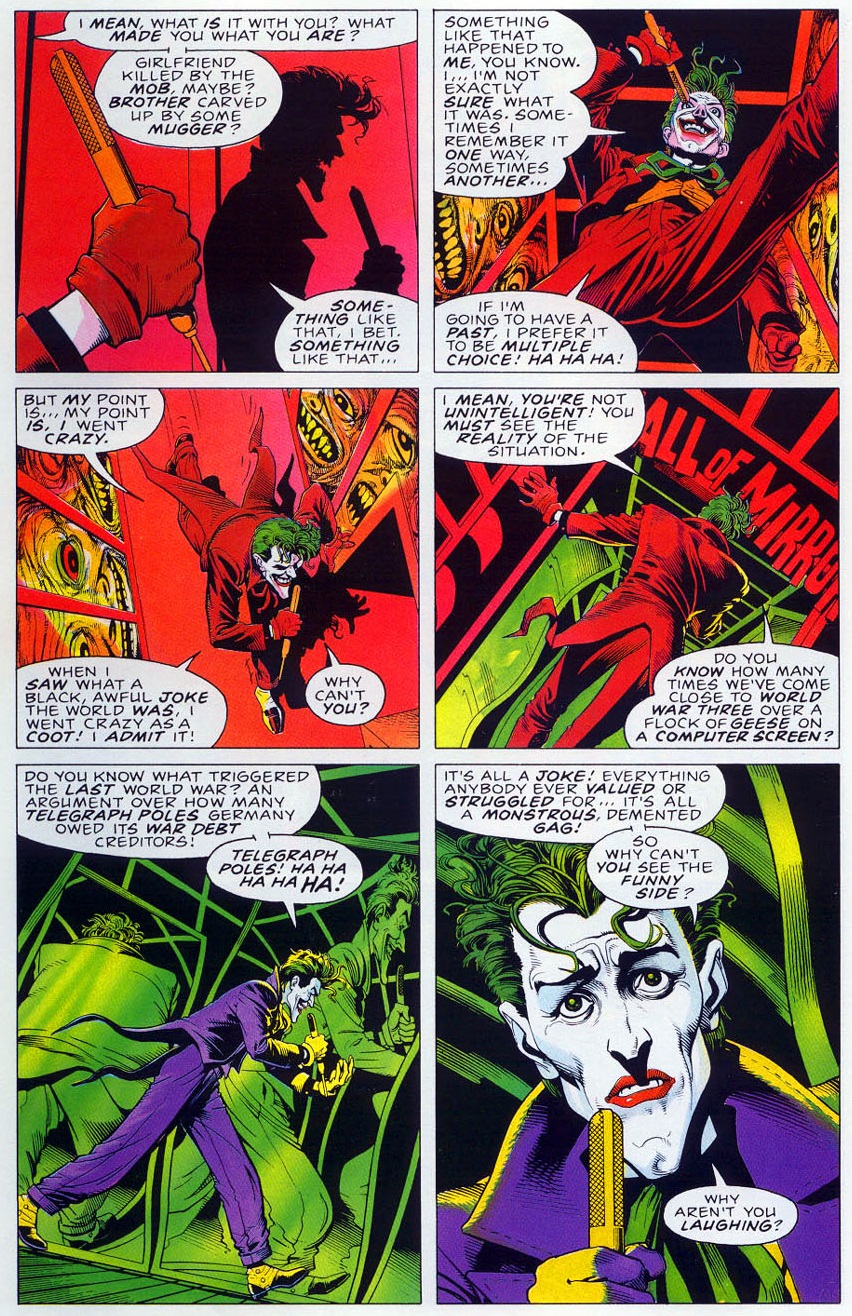
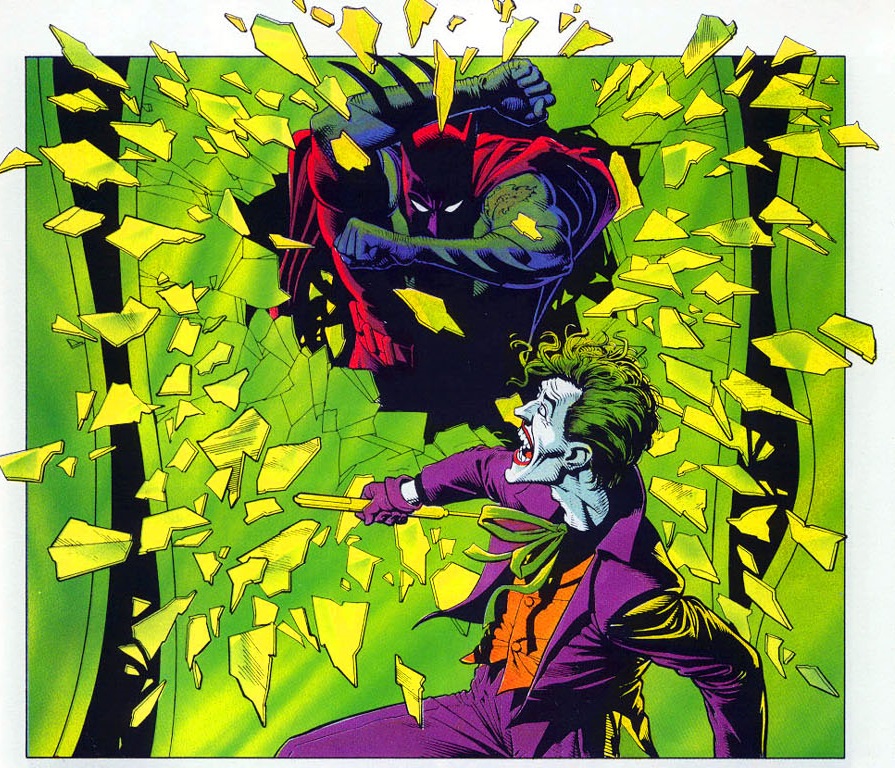 The Killing Joke
The Killing Joke
From what I understand, The Killing Joke was written by Alan Moore before The Dark Knight Returns came out, so it’s possible that no callback was intended by this sequence. Certainly, neither the tilted framing by artist Brian Bolland nor the psychedelic colors by John Higgins suggest a direct link to Frank Miller’s opus.
It’s more likely that the two instances are just logical manifestations of the whole mid-80s deconstructionist impulse spearheaded by Miller and Moore. They both set out to explore the notion that the Joker was a distorted reflection of Batman (a view then translated to the screen by Tim Burton), which just begs for this type of setting and this type of image.
In the case of The Killing Joke, the choice of a showdown at a carnival’s hall of mirrors is especially fitting, not just because the whole book is built around symmetries (literal and metaphoric), but because the Clown Prince of Crime is discussing the multiple, inconsistent versions of his past (in his memory and, ultimately, in the ways he has been written).
Geoff Klock discusses this in How to Read Superhero Comics and Why, when examining an earlier panel where the Joker’s reflection is also disturbed (by rain on a puddle) from a Lacanian perspective: ‘the Joker’s insanity is the result of identifying, not with an image of wholeness and unity […], but with a fragmented background pelted by raindrops. In short, Moore’s Joker is insane because his mirror reflects not only his image but also overdetermination and influence. Every ego must identify with what is external, but the Joker is faced with a surplus he cannot hope to control. (The mirrors broken in the Joker’s fight with Batman in the Hall of Mirrors must take on added significance in this context.)’
I don’t mean to imply that this is a purely thematic choice. After all, it does make for a particularly striking visual – there is a reason Batman’s glass-shattering entrances have become a longstanding trope. Yet it’s the combination of awesome surface and provocative subtext that lends it so much resonance. No wonder that, when Denny O’Neil revised the Joker’s origin in 1993, he tasked Bret Blevins with putting his own spin on the broken mirror idea. Thus, for a while, in post-Crisis continuity, this was officially the first time Batman and the Joker had come face to face:

